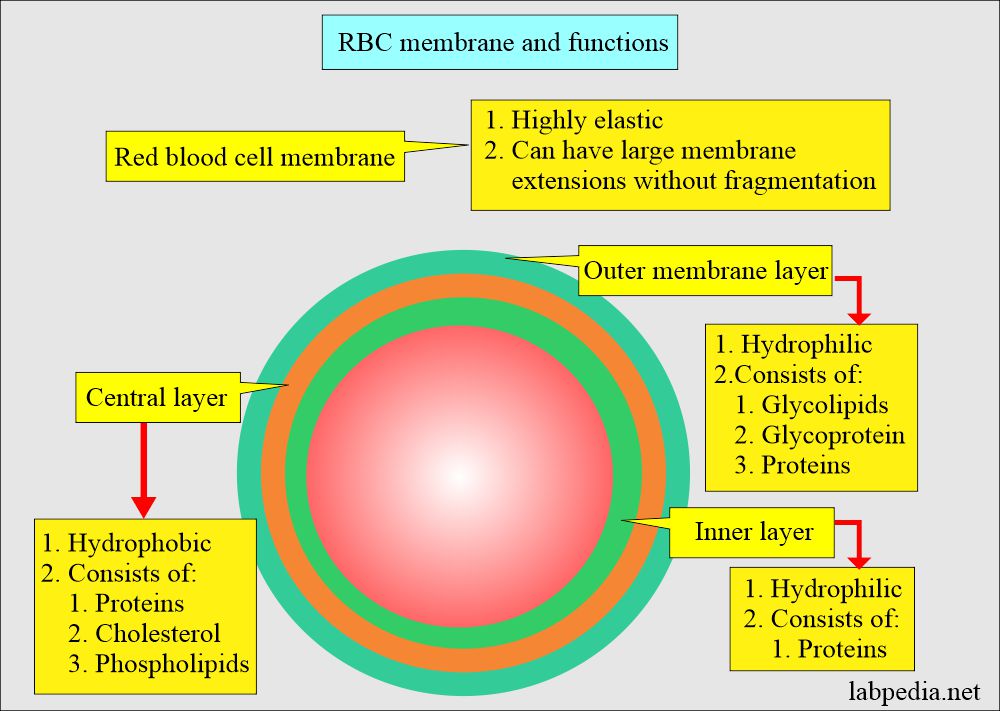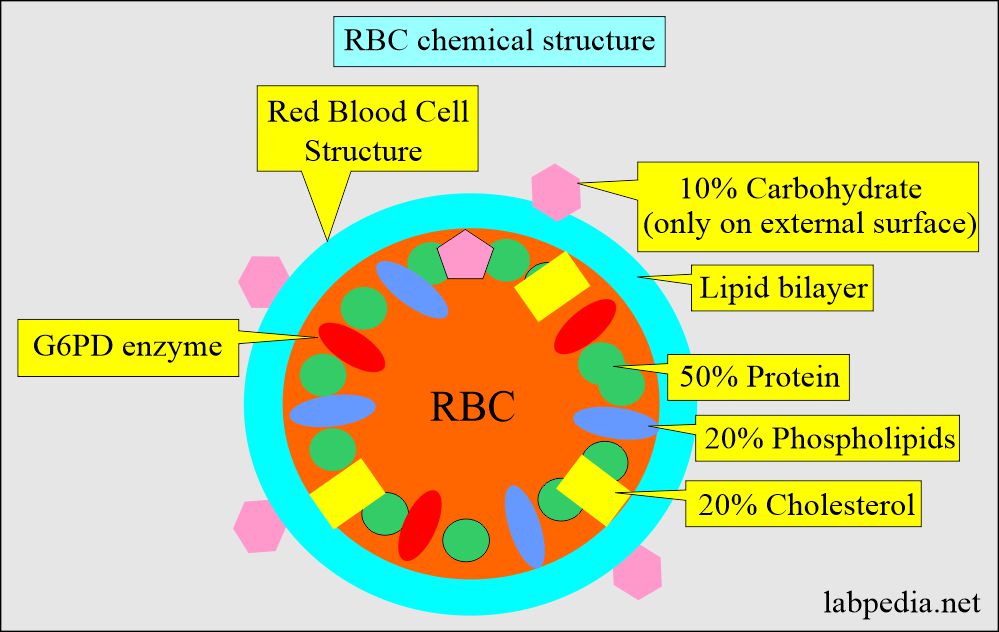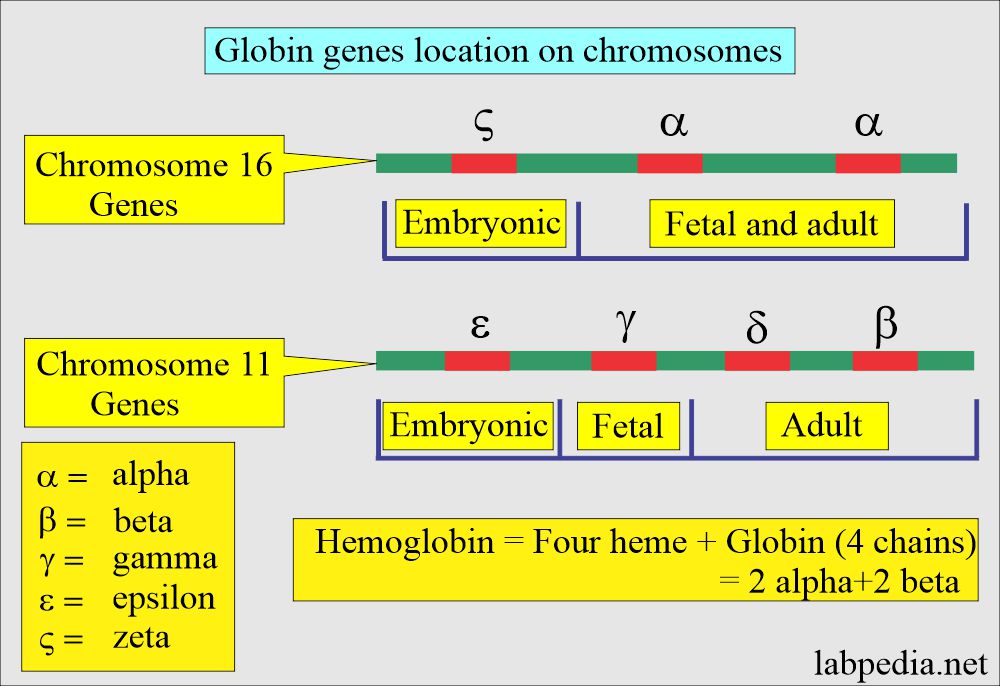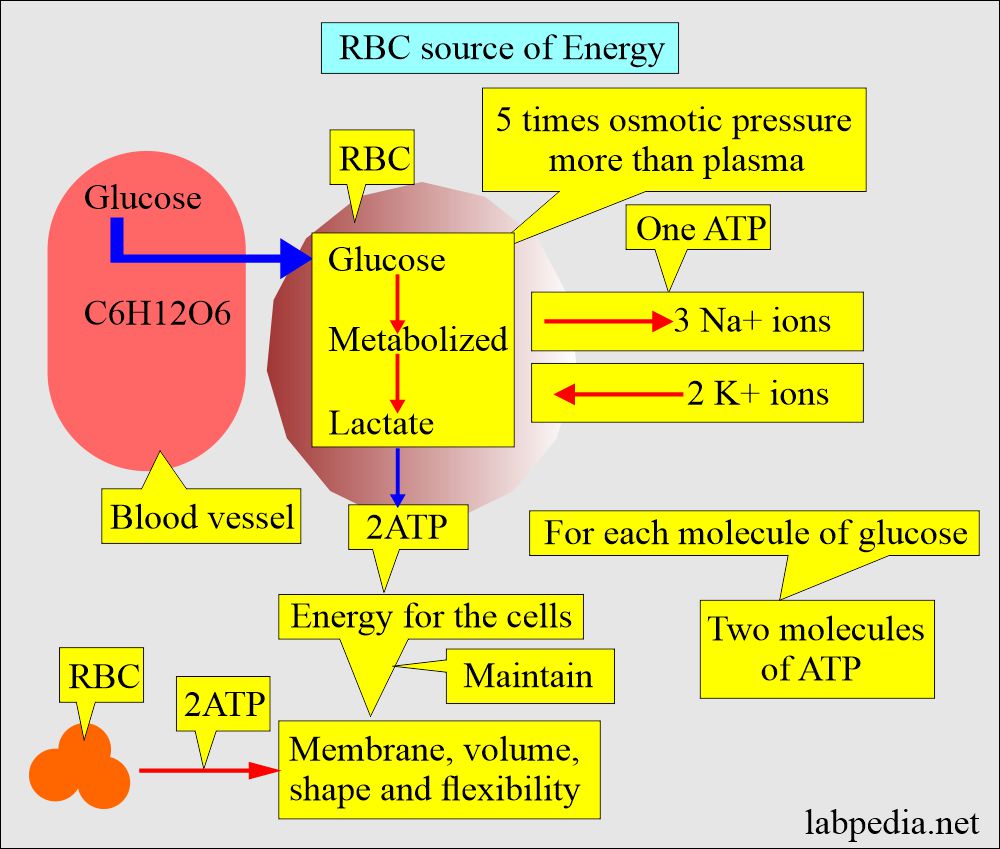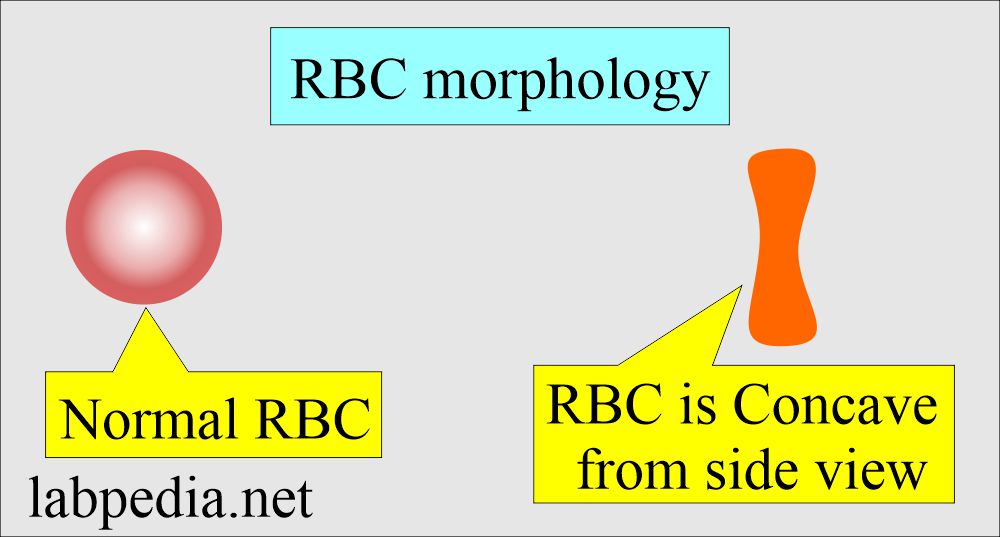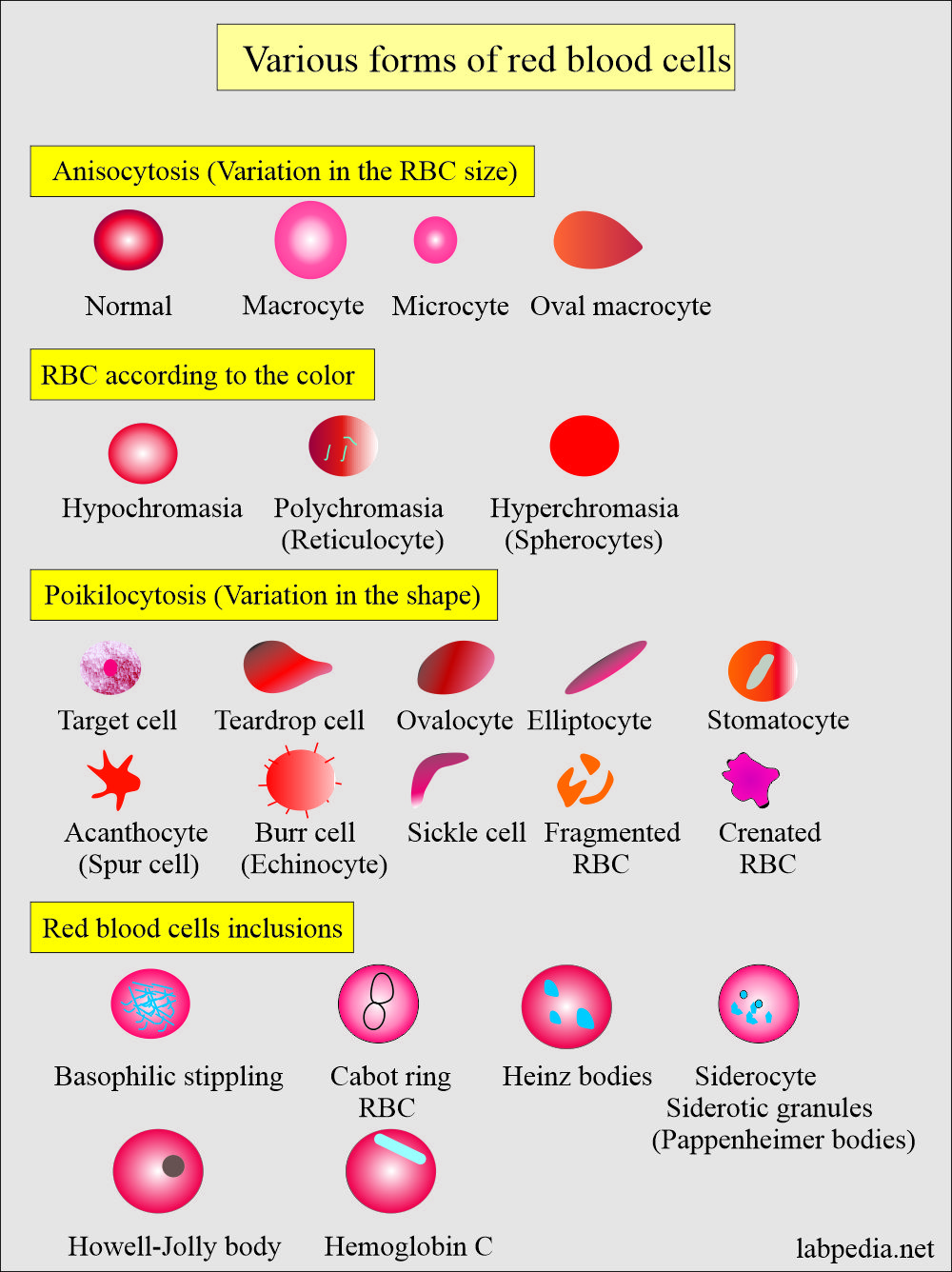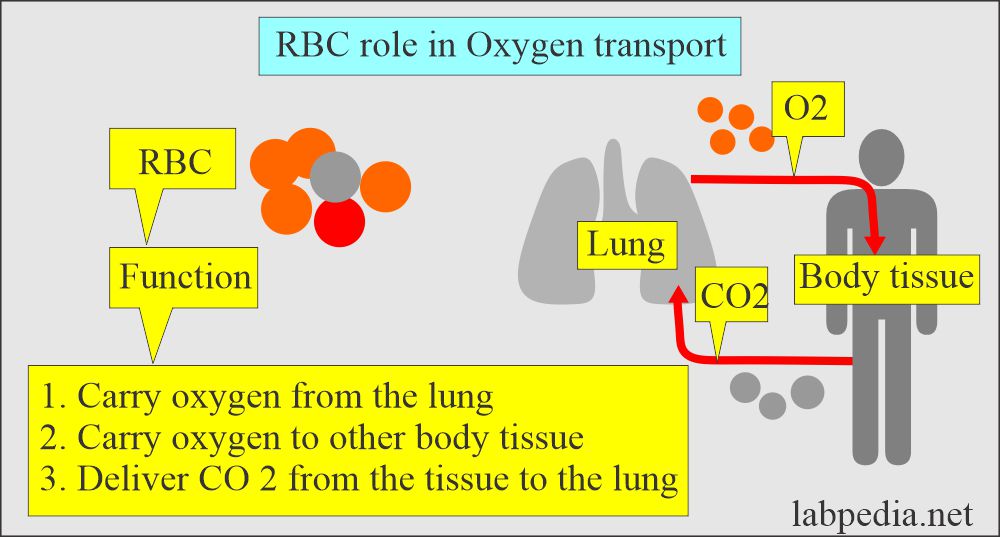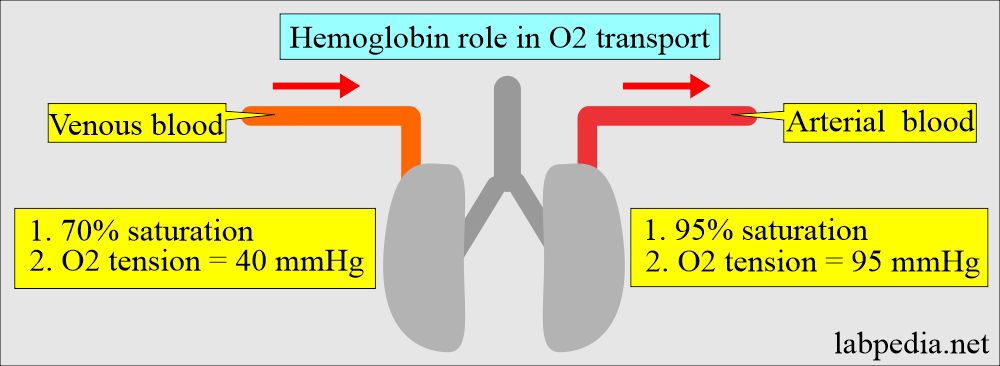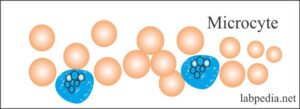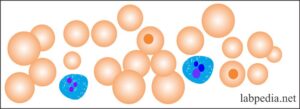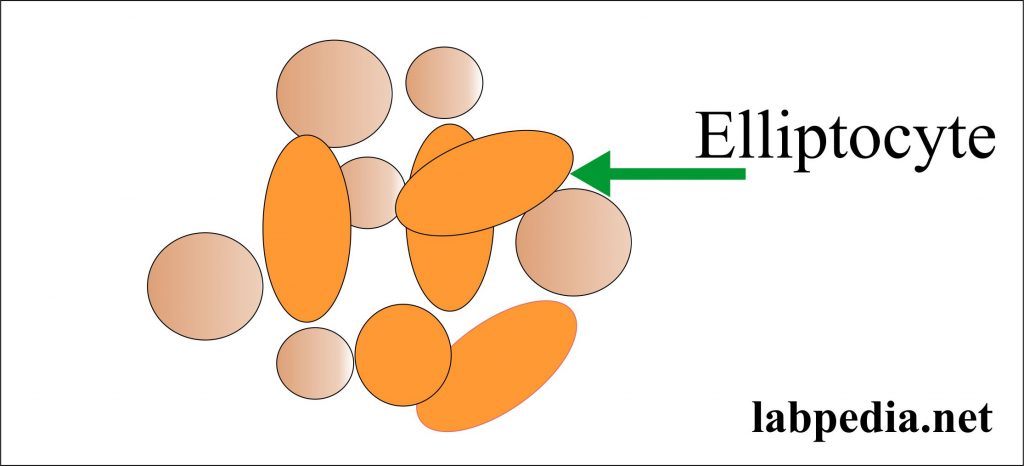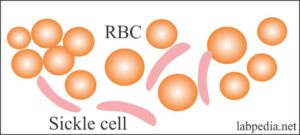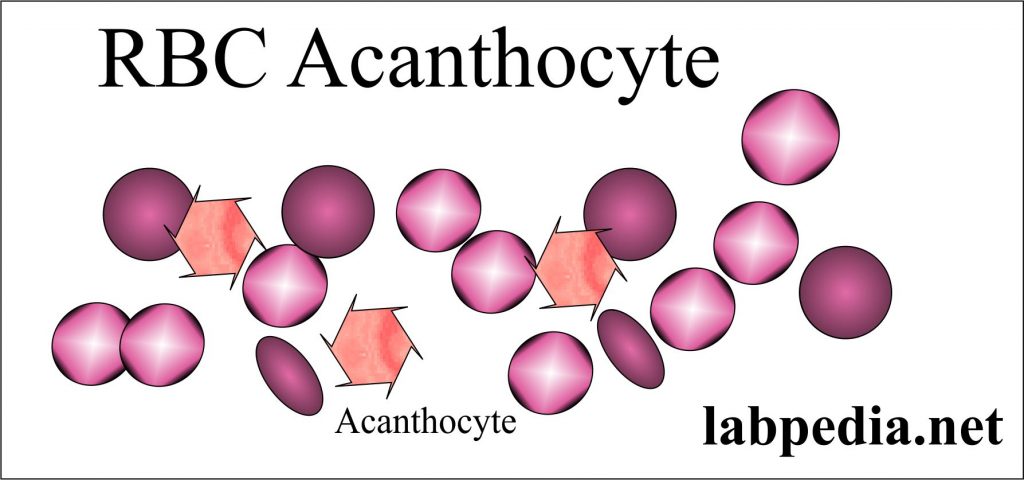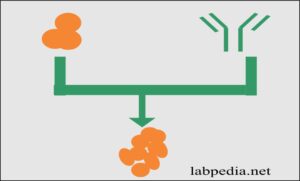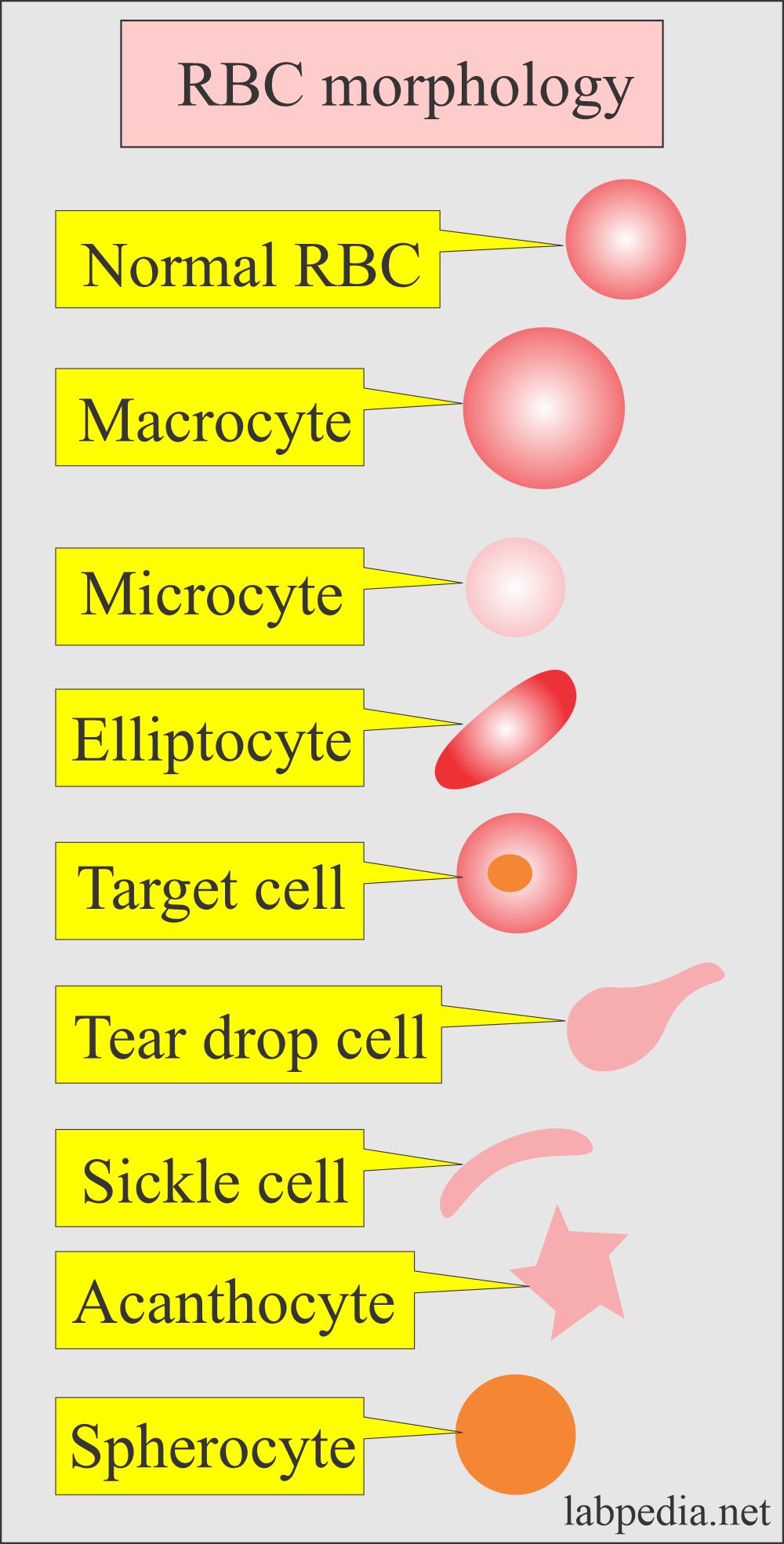Complete blood count (CBC):- Part 2 – Red Blood Cells Morphology, Functions, Interpretations and Hemoglobin Formation
Red Blood Cells
Sample for Red Blood Cells
- Takes blood in the EDTA.
- Direct blood smears for the appreciation of the RBC morphology.
Indications for Complete blood count (CBC)
- To diagnose the various types of anemia.
- Any other abnormality of white blood cells and platelets.
Pathophysiology of the red blood cells:
- Red blood cell metabolism is important for its survival and function.
What is the structure of the Red blood cell membrane:
- The RBC membrane consists of proteins and phospholipids.
- It can change its shape without any fragmentation or damage.
- The RBC membrane comprises 50% proteins, 20% phospholipids, 20% cholesterol, and 10% carbohydrates.
- Carbohydrates are only in the outer layer.
Hemoglobin formation, structure, and functions:
What is the structure of Hemoglobin?
- Normal hemoglobin formation is dependent upon:
- Adequate iron supply and delivery.
- Adequate formation of the precursor of the heme, protoporphyrins.
- Adequate synthesis of globin.
- Hemoglobin (Hb) is a conjugated globular protein with a molecular weight of around 64.4 Kd.
- This protein is 95% of the RBC’s dry weight or 33% of the RBC’s weight by volume.
- Around 65% of the Hb synthesis occurs during the nucleated stage of RBC maturation, and 35% occurs during the reticulocyte stage.
- Hemoglobin genes are present on chromosomes number 16 and 11.
- Normal Hemoglobin consists of 2 α- chains and 2- β chains with four protoporphyrin rings with Fe++ (ferrous).
What are the functions of hemoglobin:
- Hemoglobin is the main oxygen carrier to the cells and the tissue.
- This also takes CO2 back to the lungs.
What are the energy pathways for RBC metabolism:
- Active RBC metabolic pathways are important for the production of an adequate amount of ATP level, which is necessary for:
- Hemoglobin function.
- RBC membrane integrity and change in shape.
- An adequate amount of reduced pyridine nucleotides.
- Maintaining the RBC volume.
- RBC generates energy almost mainly from the anaerobic breakdown of glucose.
- Mature RBC has a limited ability to metabolize fats and amino acids.
- RBC ATP needs 90% generated by the Embeden-Meyerhof glycolytic pathway.
- 5% to 10% of the energy is provided by the metabolism of glucose-hexose monophosphate shunt.
What is the RBC structure and life pattern:
- RBCs from the front side are round but look biconcave when seen from the side view.
- This can be given in the example of a doughnut-shaped with a depression in the center.
- It measures 7 to 8 µm in diameter.
- RBCs mature in the bone marrow, and when it comes to the peripheral blood, it takes 3 to 5 days.
- The RBCs live in the peripheral blood for around 120 days. After completing their life, these are cleared in the spleen, liver, and bone marrow.
What are the abnormal forms of the red blood cells (RBCs):
What is the functions of the red blood cells:
- The RBCs’ main function is to carry oxygen from the lung (arterial blood) to the cells and the tissues. The oxygen is carried by a chemical combination with the hemoglobin.
- At the tissue level, oxygen is exchanged with CO2, bringing CO2 in venous blood to the lungs.
- Normally, O2 exchange occurs between 95% saturation in arterial blood with a mean arterial O2 tension of 95 mmHg and 70% saturation in venous blood with a mean venous O2 tension of 40 mmHg.
- The RBCs must be in close contact with the tissue and successful gaseous exchange to carry hemoglobin. RBCs must be able to pass through the microcirculation.
- RBC travels in the microcirculation in 120 days; roughly, these cover 300 miles (480 Km).
- The RBCs are flexible and biconcave discs to fulfill all these above functions.
Peripheral blood smears:
- It gives much information about the RBC morphology and the effects of various drugs or different types of anemias.
What is the Anemia workup:
- Hb concentration.
- Hematocrit (Hct).
- RBC indices.
- Reticulocytes count.
- Evaluation of the peripheral blood smear.
- Bone marrow can also be advised to classify anemia.
What are the defects of the RBC formation and the reason for anemia (Etiology):
- Deficiency diseases.
- Refractory anemia due to ineffective erythropoiesis.
- Defect of the bone marrow due to hypoproliferative anemias.
- Excessive loss of blood like:
- Hemolysis.
- Hemorrhage.
Disorders of the RBCs leading to various types of anemias:
- Iron-deficiency anemia.
- Sideroblastic anemia.
- Anemia of chronic diseases.
- Thalassemia syndrome.
- Pernicious anemia.
- Folic acid deficiency anemia.
- Aplastic anemia.
- Pure red cell aplasia.
- Refractory anemia.
- Paroxysmal nocturnal hemoglobinuria.
- Hemolytic anemias.
- Hemorrhagic anemia.
- Hereditary spherocytosis.
- Hereditary elliptocytosis.
- Glucose-6-phosphate dehydrogenase deficiency.
- Pyruvate kinase deficiency.
- Sickle cell anemia and disease.
- Autoimmune hemolytic anemia.
Red blood cell assessment is based on the following:
RBCs volume:
- Normal MCV RBCs are called normocytic.
- High MCV RBCs are called macrocytic.
- Low MCV RBCs are called microcytic.
Hemoglobin contents:
- Normal Hb and MCHC are called normochromic.
- High MCHC RBCs are called hyperchromic.
- Low MCHC RBCs are called hypochromic.
Red blood cell indices are:
| Clinical presentation | MCV fl |
MCH pg |
MCHC % |
| Normal | 80 to 100 | 26 to 32 | 32 to 36 |
| Normocytic anemia | 82 to 92 | 25 to 30 | 32 to 36 |
| Microcytic anemia | 50 to 80 | 12 to 25 | 25 to 30 |
| Macrocytic anemia | 95 to 150 | 30 to 50 | 32 to 36 |
Microscopic evaluation of peripheral blood smear:
What information do we get from the peripheral blood?:
Microscopic examination of the peripheral blood smears gives information about:
- The size (anisocytosis).
- The shape (poikilocytosis).
- The color (hypochromic or hyperchromic).
- Intracellular inclusions.
Microscopic examination of peripheral blood smear:
- First scan under the low power 10x and note:
- Staining quality of the smear.
- Also, check the center and edges of the slide to see if there is no clumping of RBCs, WBCs, and platelets for the good distribution of the cells on the smear.
- Scan for abnormal cells.
- Find the area where the RBCs should not touch each other.
- The RBCs should have a gradual central pallor.
- Scan the smear in high power 40x and note:
- WBCs abnormality.
- Can estimate WBCs count.
- Evaluate the RBC morphology.
- Scan the smear in oil immersion 100x and note:
- Evaluate the RBC’s anisocytosis, poikilocytosis, hypochromasia, polychromasia, and inclusion.
- Can evaluate the platelets count.
- WBCs differential can be done.
The following table explains the RBCs morphology changes and interpretation:
Questions and answers:
Question 1: What is the criteria for the macrocytes?
Question 2: When you will see Howel-jolly bodies in RBCs?

